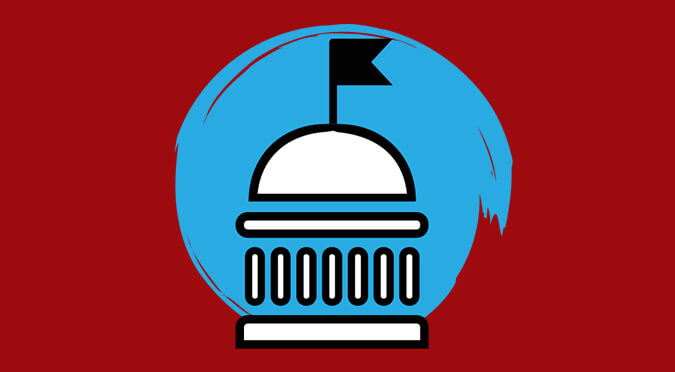How the Presidential Election Will Affect the Stock Market

This original article was written by By Anne Kates Smith, for Kiplinger.
Every four years, politics and finance converge as Americans elect a president and investors try to figure out what the outcome means for their portfolios. A look back at history shows that presidential election cycles indeed correlate with stock market returns—although not in the same, clockwork way that, say, the moon pulls on tides. As for the outcome of elections? The impact might surprise you. Below, a few things investors should consider in election years.
The presidential cycle. The stock market has, for the most part, ebbed and flowed with the four-year election cycle for the past 182 years. Wars, bear markets and recessions tend to start in the first two years of a president’s term, says The Stock Trader’s Almanac; bull markets and prosperous times mark the latter half. Since 1833, the Dow Jones industrial average has gained an average of 10.4% in the year before a presidential election, and nearly 6%, on average, in the election year. By contrast, the first and second years of a president’s term see average gains of 2.5% and 4.2%, respectively. A notable recent exception to decent election-year returns: 2008, when the Dow sank nearly 34%. (Returns are based on price only and exclude dividends.)
But no one needs to tell you that the current cycle is anything but average. The Dow racked up an impressive 27% in the first year of President Obama’s second term, and 7.5% in year two. Last year, which was supposed to be the strongest of the cycle, saw the Dow industrials drop 2%. “Given that the past three years are so out of sync with the normal cycle, we’re not certain what 2016 will bring,” says Jim Stack, a market historian and publisher of the newsletter InvesTech Research.
Democrat or Republican? You may feel strongly about one party or the other when it comes to your politics, but when it comes to your portfolio, it doesn’t matter much which party wins the White House. Conventional wisdom might suggest that Republicans, who are supposedly more business-friendly than the Democrats, would be more beneficial for your stock holdings. In fact, looking back to 1900, Democrats have been slightly better for stocks, with the Dow up an average of nearly 9% annually when the Democrats are in control, compared with nearly 6% per year during Republican administrations. But normal variations in annual stock market returns dwarf that difference, says Russ Koesterich, chief investment strategist at BlackRock. He concludes that a focus on which party wins the White House is unwarranted—at least from an investing standpoint.
Divided versus united government. Another urban legend is that markets do better when government is divided, says Koesterich. The theory behind the legend, he says, is that “divided power saves both parties from their worst instincts. With neither party in control, government is somewhat neutered, leaving markets free to flourish.” But the theory isn’t borne out by history. InvesTech has looked at stock returns going back to 1928 under three separate scenarios. In the two years following an election, Standard & Poor’s 500-stock index gained 16.9%, on average, when one party controls the White House and both houses of Congress; 15.6% when one party controls both houses of Congress and the other party owns the White House; and just 5.5% when the House and Senate are divided. But a divided Congress doesn’t always lead to sub-par returns. In the two-year periods following the 2010 and 2012 elections, the S&P 500 rose 19% and 42%, respectively.
A political crystal ball. Election results may not be so great at predicting stock market returns, but the converse is not the case. It turns out that the stock market has an uncanny ability to predict who will call the White House home for the next four years. If the stock market is up in the three months leading up to the election, put your money on the incumbent party. Losses over those three months tend to usher in a new party.
The statistics are compelling. In the 22 president elections since 1928, 14 were preceded by gains in the three months prior. In 12 of those 14 instances, the incumbent (or the incumbent party) won the White House. In seven of eight elections preceded by three months of stock market losses, incumbents were sent packing. Exceptions to this correlation occurred in 1956, 1968 and 1980. According to Stack, the S&P 500 has an 86.4% success rate in forecasting the election.